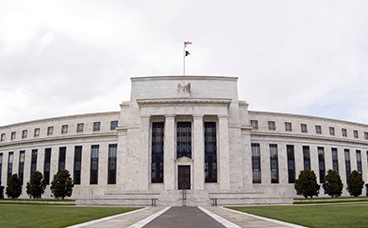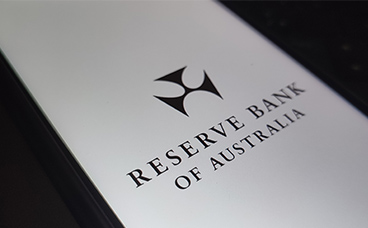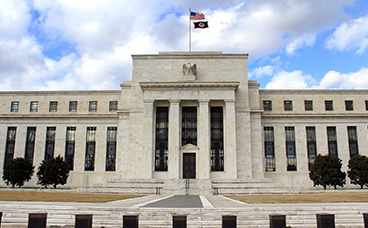Research notes
Stay informed with the most recent market and company research insights.

Research Notes
A few challenges but the core remains strong
Simplifying the medication journey
Books Barossa budget boost
2Q beat; op leverage returns; GLP-1s benefit PAP
No need to rush on green
Out of the woods
Time your run
Pro Medicus Mach 2
Stretched too thin: Downgrade to Hold
System pressures capping near-term upside
News & insights
In our previous discussion on the Fed, we suggested that the deterioration in the US labour market would move the Fed toward an easing path. We have now seen the Fed cut rates by 25 basis points at the September meeting. As a result, the effective Fed funds rate has fallen from 4.35% to 4.10%.
Our model of the Fed funds rate suggests that the effective rate should move toward 3.35%. At this level, the model indicates that monetary policy would be neutral.
The Summary of Economic Projections from Federal Reserve members and Fed Presidents also suggests that the Fed funds rate will fall to a similar level of 3.4% in 2026.
We believe this will happen by the end of the first quarter of 2026. In fact, the Summary of Economic Projections expects an effective rate of 3.6% by the end of 2025.
The challenge remains the gradually weakening US labour market, with unemployment expected to rise from 4.3% now to 4.5% by the end of 2025. This is then projected to fall very slowly to 4.4% by the end of 2026 and 4.3% by the end of 2027.
These expectations would suggest one of the least eventful economic cycles in recent history. We should be so lucky!
In the short term, it is likely that the Fed will cut the effective funds rate to 3.4% by March 2026.
This move to a neutral stance will have a significant effect on the world trade cycle and on commodities. The US dollar remains the principal currency for financing trade in the Indo-Pacific. Lower US short-term rates will likely generate a recovery in the trade of manufacturing exports in the Indo-Pacific region, which in turn will increase demand for commodities.
The Fed’s move to a neutral monetary policy will generate benefits well beyond the US.
Just as an introduction to what I'm going to talk about in terms of Australian interest rates today, we'll talk a little bit about the trimmed mean, which is what the RBA targets. The trimmed mean was invented by the Dallas Fed and the Cleveland Fed. What it does is knock out the 8% of crazy high numbers and the 8% of crazy low numbers.
That's the trimming at both ends. So the number you get as a result of the trimmed mean is pretty much the right way of doing it. It gets you to where the prices of most things are and where inflation is. That’s important to understand what's been happening in inflation.
With that, we've seen data published for the month of July and published in the month of August, which we'll talk about in a moment. Back in our remarks on the 14th of August, we said that the RBA would not cut in September. That was at a time when the market thought there would be a September return. But we thought they would wait until November. So with the RBA leaving the cash rate unchanged on the 30th of September, is it still possible for a cut in November?
The RBA released its statement on 30th September, and that noted that recent data, while partial and volatile, suggests that inflation in the September quarter may be higher than expected at the time of the August Statement on Monetary Policy. So what are they talking about? What are they thinking about when they say that? Well, it could be that they’re thinking about the very sharp increases in electricity prices in the July and August monthly CPIs.
In the August monthly CPI, even with electricity prices rising by a stunning 24.6% for the year to August faster than the 13.6% for the year to July; the trimmed mean still fell from 2.7% in the year to July to 2.6% in the year to August. Now, a similar decline in September would take that annual inflation down to 2.4%.
The September quarter CPI will be released on the 29th of October. Should it show a trimmed mean of 2.5% or lower, then we think that the RBA should provide a rate cut in November. This would provide cheer for homeowners as we move towards the festive season. Still, it all depends on what we learn from the quarterly CPI on the 29th of October.
In recent days, several people have asked for my updated view on the Federal Reserve and the Fed funds rate, as well as the outlook for the Australian cash rate. I thought I’d walk through our model for the Fed funds rate and explain our approach to the RBA’s cash rate.
It’s fascinating to look at the history of the current tightening cycle. The Fed began from a much higher base than the RBA, and in this cycle, they reached a peak rate of 535 basis points, compared to the RBA’s peak of 435 basis points. For context, in the previous tightening cycle, the RBA reached a peak of 485 basis points.
The reason the RBA was more cautious this time around is largely due to an agreement between Treasurer Jim Chalmers and the RBA. The goal was to implement rate increases that would not undo the employment gains made in the previous cycle. As a result, the RBA was far less aggressive in its approach to rate hikes.
This divergence in peak rates is important. Because the Australian cash rate peaked lower, the total room for rate cuts and the resulting stimulus to the economy is significantly smaller than in previous cycles.
The Fed, on the other hand, peaked at 535 basis points in August last year and began cutting rates shortly after. By the end of December, they had reduced the rate to 435 basis points, where it has remained since.
Recent U.S. labour market data shows a clear slowdown. Over the past 20 years, average annual employment growth in the U.S. has been around 1.6 percent, but this fell to 1.0 percent a few months ago and dropped further to 0.9 percent in the most recent data.
This suggests that while the Fed has successfully engineered a soft landing by slowing the economy, it now risks tipping into a hard landing if rates remain unchanged.
Fed Funds Rate Model Update
Our model for the Fed funds rate is based on three key variables: inflation, unemployment, and inflation expectations. While inflation has remained relatively stable, inflation expectations have declined significantly, alongside the drop in employment growth.
As a result, our updated model now estimates the Fed funds rate should be around 338 basis points, which is 92 basis points lower than the current rate of 435. This strongly suggests we are likely to see a 25 basis point cut at the Fed’s September 17 meeting.
There are two more Fed meetings scheduled for the remainder of the year, one in October and another on December 10. However, we will need to review the minutes from the September meeting before forming a view on whether further cuts are likely.
Australian Cash Rate Outlook
Turning to the Australian cash rate, as mentioned, the peak this cycle was lower than in the past, meaning the stimulatory effect of rate cuts is more limited.
We have already seen three rate cuts, and the key question now is whether there will be another at the RBA’s 4 November meeting.
This decision hinges entirely on the September quarter inflation data, which will be released on 29 October 2025.
The RBA’s strategy is guided by the concept of the real interest rate. Over the past 20 years, the average real rate has been around 0.85 percent. Assuming the RBA reaches its 2.5 percent inflation target, this implies a terminal cash rate of around 335 basis points. Once that level is reached, we expect it will mark the final rate cut of this cycle, unless inflation falls significantly further.
So, will we see a rate cut in November?
It all depends on the trimmed mean inflation figure for the September quarter. If it comes in at 2.5 percent or lower, we expect a rate cut. The June quarter trimmed mean was 2.7 percent, and the monthly July figure was 2.8 percent. If the September figure remains the same or rises, there will be no cut. Only a drop to 2.5 percent or below will trigger another move.
We will have a much clearer picture just a few days before Melbourne Cup Day.









